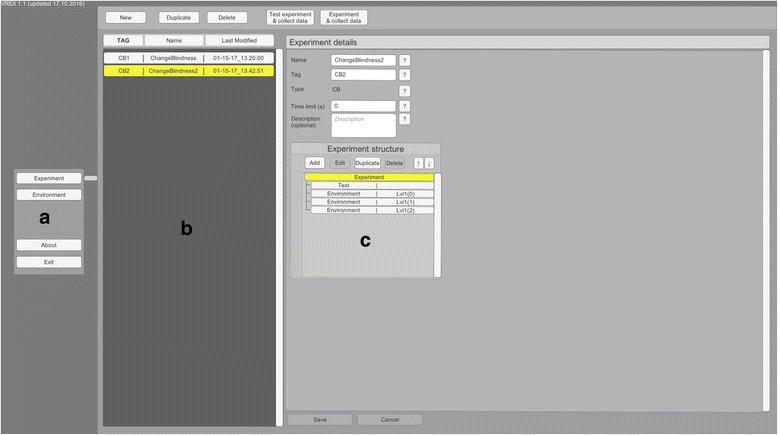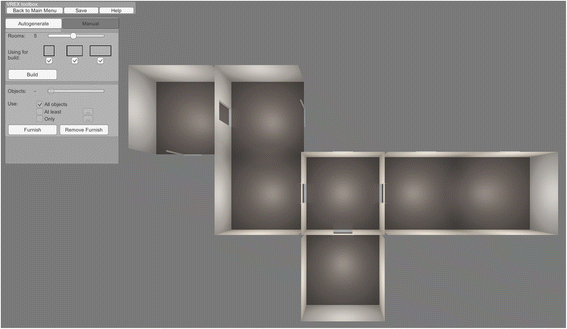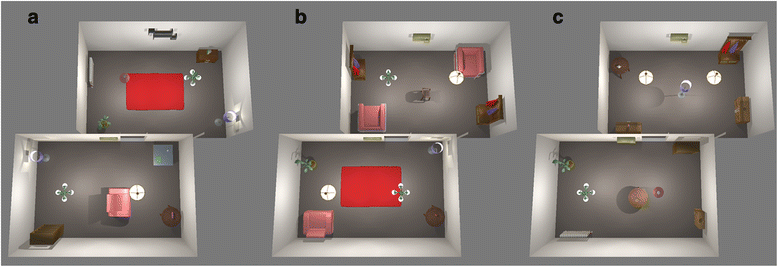VREX: an open-source toolbox for creating 3D virtual reality experiments
- PMID: 28196507
- PMCID: PMC5307765
- DOI: 10.1186/s40359-017-0173-4
VREX: an open-source toolbox for creating 3D virtual reality experiments
Abstract
Background: We present VREX, a free open-source Unity toolbox for virtual reality research in the fields of experimental psychology and neuroscience.
Results: Different study protocols about perception, attention, cognition and memory can be constructed using the toolbox. VREX provides a procedural generation of (interconnected) rooms that can be automatically furnished with a click of a button. VREX includes a menu system for creating and storing experiments with different stages. Researchers can combine different rooms and environments to perform end-to-end experiments including different testing situations and data collection. For fine-tuned control VREX also comes with an editor where all the objects in the virtual room can be manually placed and adjusted in the 3D world.
Conclusions: VREX simplifies the generation and setup of complicated VR scenes and experiments for researchers. VREX can be downloaded and easily installed from vrex.mozello.com.
Keywords: Attention; Change blindness; Memory; Spatial perception; Toolbox; Virtual reality.
Figures







References
-
- Karacan H, Cagiltay K, Tekman HG. Change detection in desktop virtual environments: An eye-tracking study. Comput. Hum. Behav. 2010;26:1305–1313. doi: 10.1016/j.chb.2010.04.002. - DOI
-
- Jordan W., S. (2015). Immersive Virtual Environment Technology to Supplement Environmental Perception, Preference and Behavior Research: A Review with Applications. International Journal Of Environmental Research And Public Health, Vol 12, Iss 9, Pp 11486–11505 (2015), (9), 11486. doi:10.3390/ijerph120911486 - PMC - PubMed
-
- Scarfe P. & Glennerster A. Using high-fidelity virtual reality to study perception in freely moving observers. Journal of Vision. 2015. doi: 10.1167/15.9.3 - PubMed
MeSH terms
LinkOut - more resources
Full Text Sources
Other Literature Sources
Medical

